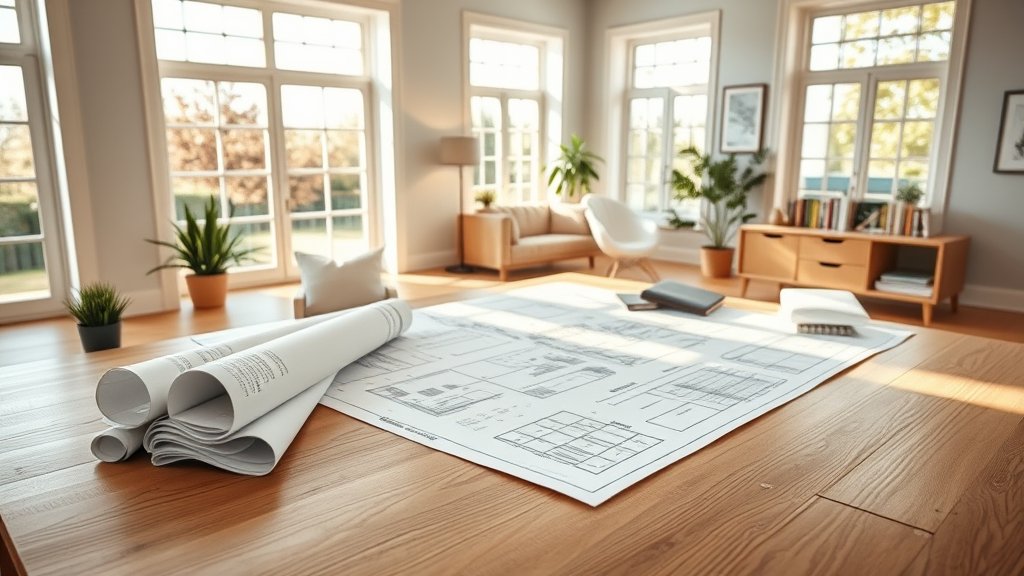When it comes to home renovations, it’s easy to get lost in the grandeur of Pinterest boards and home improvement shows. The idea of transforming a humble abode into a chic, modern sanctuary is undeniably enticing. But, before diving headfirst into the deep end of the renovation pool, it’s crucial to identify the essentials. Understanding the difference between must-haves and nice-to-haves can save both time and money. To get a clear idea, researching the **huis strippen en renoveren kosten** can be incredibly beneficial.
For instance, structural repairs or updating old plumbing might not be as glamorous as a new kitchen island, but they are vital for the integrity and functionality of the home. Prioritizing these essential tasks ensures that the foundation is solid before layering on the aesthetic enhancements. This approach not only prevents future headaches but also lays the groundwork for a smoother renovation journey.
Setting a realistic budget
One of the most daunting aspects of any renovation project is setting a budget. It’s easy to underestimate costs, especially when unexpected issues arise. Creating a realistic budget involves thorough research and an honest assessment of financial limits. Start by listing all anticipated expenses—from materials and labor to permits and finishing touches.
Adding a buffer of 10-15% for unforeseen costs is a wise move. Renovations often uncover hidden problems, like outdated wiring or structural damage that wasn’t visible initially. Having this financial cushion can be a lifesaver, preventing stress and ensuring that the project doesn’t come to a grinding halt due to lack of funds.
Getting the right team on board
A successful renovation hinges on having the right team in place. Skilled professionals bring expertise, efficiency, and peace of mind. When selecting contractors, electricians, plumbers, or designers, it’s essential to do thorough background checks. Reading reviews, checking references, and even visiting previous projects can provide valuable insights.
Building a rapport with the team is equally important. Communication is key; make sure expectations are clear from the start and maintain open lines throughout the project. A good team not only executes plans but also offers valuable advice and solutions when challenges arise.
Making savvy choices with materials
The selection of materials can significantly impact both the cost and outcome of a renovation. While high-end materials like marble or hardwood floors are undoubtedly luxurious, there are often more budget-friendly options that don’t compromise on style or durability. For example, engineered wood or high-quality laminate can mimic the look of hardwood at a fraction of the price.
Sustainability is another factor to consider. Eco-friendly materials like bamboo or recycled glass tiles are not only good for the environment but can also add unique character to a home. Making informed choices about materials ensures that the renovation is both cost-effective and aligned with personal values.
Staying on track and managing surprises
No renovation project goes entirely according to plan. Delays, unexpected discoveries, and changes in scope are part and parcel of the process. The key to staying on track is flexibility and proactive management. Regular check-ins with contractors and keeping a detailed timeline can help monitor progress and address issues promptly.
When surprises do pop up—like discovering asbestos in old insulation or finding out that a wall earmarked for removal is load-bearing—having contingency plans in place is crucial. Whether it’s reallocating budget funds or adjusting timelines, being prepared for the unexpected makes navigating these bumps smoother.
The importance of patience
Renovating a home is no small feat; it requires patience and perseverance. There will be days when progress feels slow or when setbacks occur, but keeping the end goal in sight helps maintain motivation. Celebrating small victories along the way can also boost morale and keep spirits high.
Ultimately, a well-executed renovation transforms more than just physical spaces—it enhances daily living experiences and adds value to one’s home. By approaching each step with careful planning and flexibility, the journey becomes as rewarding as the final result.

